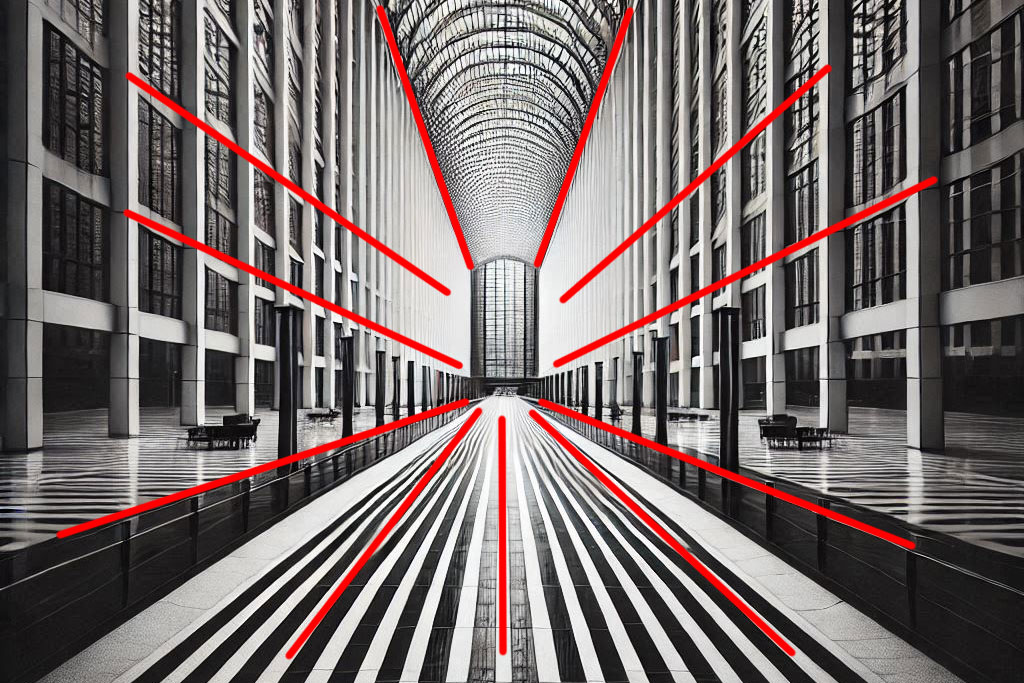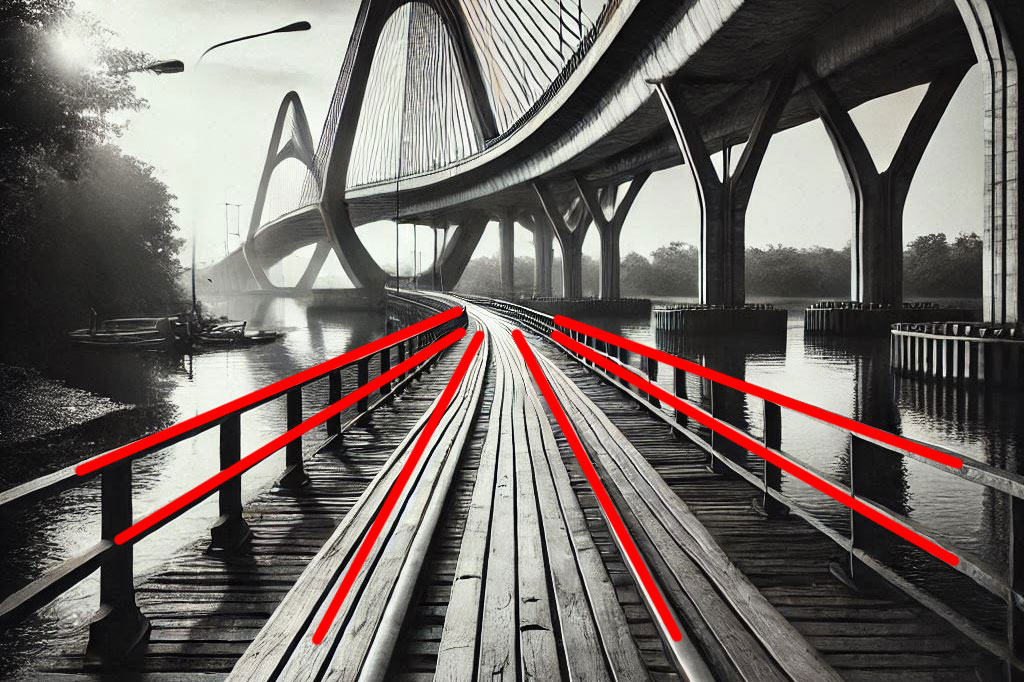Leading lines are one of photography’s most effective tricks for turning ordinary shots into captivating masterpieces. These lines, whether bold or subtle, naturally guide the viewer’s eye through the frame, creating movement, depth, and focus. From winding trails to towering buildings, leading lines are everywhere, waiting to elevate your compositions. Understanding how to spot and use them can transform your photography, no matter your style or subject.
Table of Contents
What are leading lines in photography?
Leading lines are a powerful compositional tool that naturally guide the viewer’s eye through a photo. They can be anything from roads and rivers to fences and shadows. These lines direct attention to the main subject or focal point, adding depth and purpose to your shot.
Whether obvious or subtle, leading lines help create balance, focus, and storytelling in an image. Photographers often rely on them to craft dynamic photos across landscapes, portraits, and even architecture.

How leading lines affect images?
Leading lines transform photos. They add movement, create depth, and evoke emotion. A winding path can suggest tranquility, while converging lines can build tension or drama.
Lines often help viewers feel immersed in a scene. They pull the eye naturally through the photo, creating a sense of flow. For example, a curved line meandering through a landscape feels graceful. In contrast, sharp diagonal lines bring energy and motion.
Leading lines also tell a story. A road stretching into the horizon may symbolize a journey, while steps leading to a doorway can hint at curiosity or discovery.
Why would photographers use leading lines?
Photographers use leading lines to guide attention and structure their compositions. They make images more engaging and visually pleasing. By intentionally incorporating lines, photographers can:
- Highlight the subject or focal point.
- Add layers of depth and dimension.
- Evoke specific emotions or moods.
- Tell a more compelling story.
Leading lines are versatile and work well in all types of photography. From capturing serene landscapes to urban street scenes, they’re a go-to technique.
Types of leading lines
Leading lines come in many shapes and forms, and each has unique effects on an image:
- Straight lines: Found in roads, fences, or architecture, they suggest strength and stability.
- Diagonal lines: Create dynamism and motion, drawing the viewer into the scene.
- Curved lines: Graceful and fluid, these lines gently guide the eye, often in nature or landscapes.
- Converging lines: Add tension or drama by leading to a single point, like train tracks meeting at the horizon.
- Vertical lines: Powerful and commanding, they’re common in portraits and urban photography.
Even subtle lines, like shadows or tonal contrasts, can serve as leading lines when used thoughtfully.
How to use leading lines in photography
Incorporating leading lines into your photos takes practice, but the results are worth it. Here’s how to get started:
- Scout your location: Look for natural or human-made lines like trails, bridges, or railings.
- Focus on your subject: The lines should direct the viewer’s attention to a specific point of interest.
- Experiment with angles: Change your perspective to find the most impactful composition. Try shooting from low or high angles.
- Mind the direction: Consider how the lines move through the frame. Do they point toward the subject or lead the eye out of the photo?
- Combine with other techniques: Use the rule of thirds or framing to make the lines even more effective.
Enhancing leading lines in editing
Post-processing can make your leading lines pop. Here are some editing tips:
- Adjust contrast: Boosting contrast can make the lines more prominent.
- Sharpen details: Selective sharpening adds definition to subtle lines.
- Use color grading: Complementary colors can enhance the visual flow along the lines.
- Crop strategically: Adjust your frame to strengthen the composition and emphasize the lines.
- Play with light and shadow: Highlight tonal contrasts to create natural lines.
Editing tools like Lightroom make it easy to refine and enhance these elements.
FAQs
What is leading lines in photography activity?
It’s the process of identifying and using lines within a scene to guide viewers’ eyes toward a focal point or subject.
What are the effects of leading lines?
Leading lines add movement, depth, emotion, and storytelling to an image. They also create visual harmony by organizing the composition.
What famous photographer uses leading lines?
Ansel Adams often used natural lines in his landscapes to guide the viewer through the scene.
What are dominant lines in photography?
Dominant lines are the most prominent lines in a composition. They stand out and command attention, strongly influencing how viewers perceive the image.
